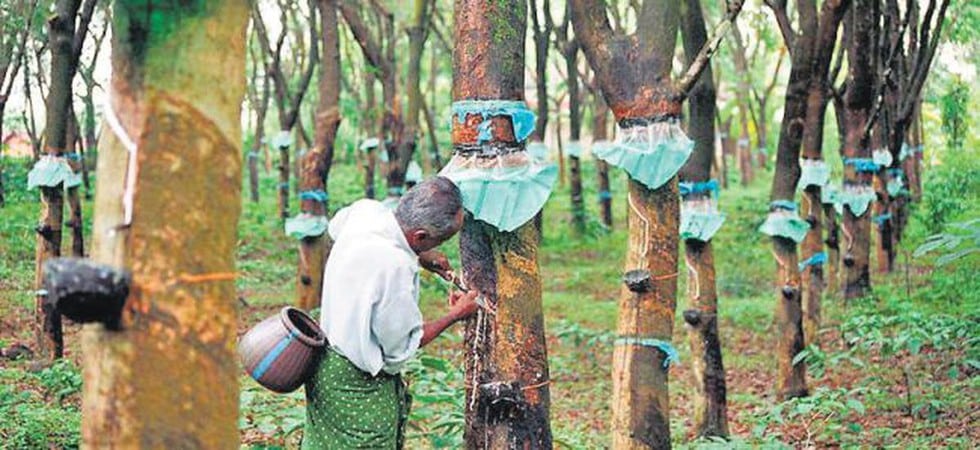Why in news?
- The report highlighted that culturing natural rubber in the last century has brought significant economic benefits for growers. But excessive rubber plantations are adversely affecting various wildlife and plant species
Natural Rubber
- Natural rubber is a polymer made up of a chemical molecule called isoprene.
- It is a native of the Amazon basin which was introduced to countries in the tropical belts of Asia and Africa in the late nineteenth century.
- Climatic conditions required for Rubber
- Rubber trees require moist and humid climates with heavy rainfall of more than 200 cm.
- It grows well in equatorial climates and temperatures above 25 degrees Celsius.
- Rubber trees require well-drained, weathered soils.
Rubber Plantations in India
- India is the world’s largest producer and the third-largest user of natural rubber.
- Rubber Growing Areas in India
- Traditional Areas: Primarily in Tamil Nadu’s Kanyakumari District and Kerala.
- Non-traditional regions: Coastal Karnataka, Goa, Maharashtra’s Konkan Region, coastal Andhra Pradesh and Orissa, the northeastern provinces, and the Andaman and Nicobar Islands, among other places.
Q1) What is a Polymer?
Polymer is any of a class of natural or synthetic substances composed of very large molecules, called macromolecules, that are multiples of simpler chemical units called monomers.
Source: Rubber plantations in Tripura affecting monkeys, vegetation, suggests paper
Last updated on June, 2025
→ UPSC Notification 2025 was released on 22nd January 2025.
→ UPSC Prelims Result 2025 is out now for the CSE held on 25 May 2025.
→ UPSC Prelims Question Paper 2025 and Unofficial Prelims Answer Key 2025 are available now.
→ UPSC Calendar 2026 is released on 15th May, 2025.
→ The UPSC Vacancy 2025 were released 1129, out of which 979 were for UPSC CSE and remaining 150 are for UPSC IFoS.
→ UPSC Mains 2025 will be conducted on 22nd August 2025.
→ UPSC Prelims 2026 will be conducted on 24th May, 2026 & UPSC Mains 2026 will be conducted on 21st August 2026.
→ The UPSC Selection Process is of 3 stages-Prelims, Mains and Interview.
→ UPSC Result 2024 is released with latest UPSC Marksheet 2024. Check Now!
→ UPSC Toppers List 2024 is released now. Shakti Dubey is UPSC AIR 1 2024 Topper.
→ Also check Best IAS Coaching in Delhi






















